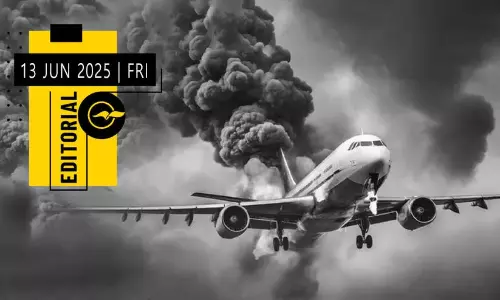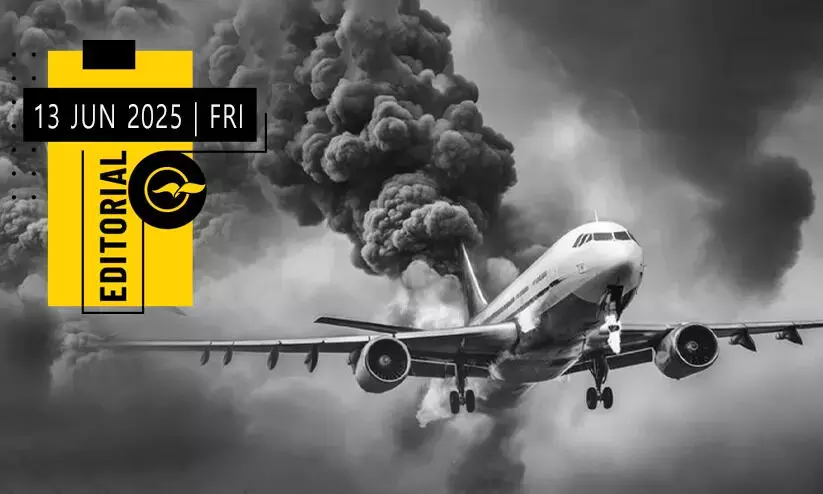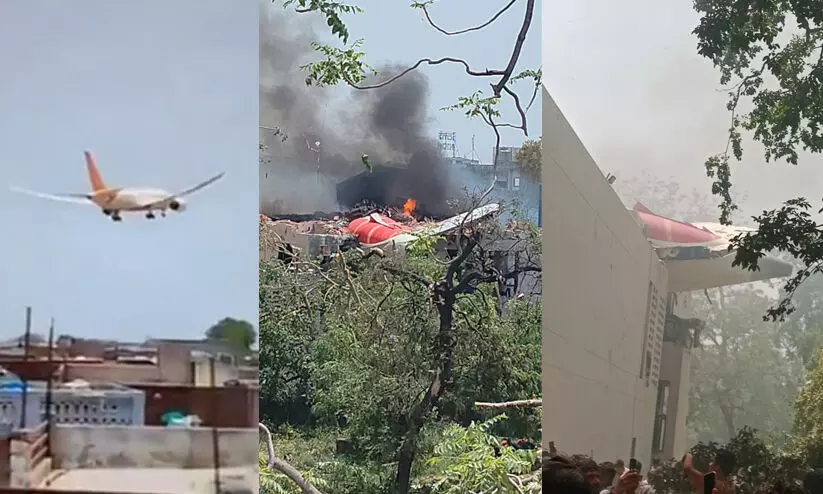
Yet another air tragedy
text_fieldsThe nation has become witness to yet another tragic air disaster. An Air India flight that departed from Ahmedabad to London crashed, claiming the lives of 241 passengers and crew members, and five students on the ground who were having their meal in the canteen of B.J. Medical College where the plane came down. A total of 246 people have lost their lives. Miraculously, one passenger survived the crash. Our thoughts are with departed souls and we share in the grief of their families. Madhyamam extends heartfelt condolences to those affected by this tragedy. The Air India Boeing Dreamliner 787 had taken off from Ahmedabad's Sardar Vallabhbhai Patel International Airport and reportedly crashed into nearby buildings while it was still at a low altitude. The fact that the aircraft crashed in a densely populated area and was fully fueled for a long-haul journey is believed to have aggravated the scale of the disaster. The central government has announced an investigation into the tragedy. Tata Group, the owners of the airline, stated that the cause of the crash was not immediately evident. However, Air Traffic Control has confirmed that distress signals were received from the aircraft shortly after takeoff, and a Mayday alert was transmitted just moments before the crash.
The aircraft involved in the accident was over 11 years old. Due to the current global shortage of new aircraft, most planes in operation around the world today are more than 10 years old on average. An order backlog of 17,000 new aircraft was highlighted at the International Air Transport Association (IATA) conference held in Delhi earlier this month, pointing out its impact on airline services. Among those awaiting delivery of new aircraft are Air India and another major Indian airline, IndiGo. Due to limited availability, the operational lifespan of current aircraft in service has been extended from an average of 13 years to 15 years. As aircraft age, fuel consumption and maintenance costs rise, which in turn affects overall service efficiency and reliability. The flight involved in the tragedy had arrived in Ahmedabad from Delhi earlier yesterday and had taken off as an international service by noon. The Ahmedabad–London service is one of Air India’s long-haul routes under Tata ownership. Formerly India’s national carrier, Air India was acquired by the Tata Group in 2022 through a government disinvestment process. This was expected to make the Indian aviation sector more competitive and efficient. However, not only have the anticipated improvements failed to materialize, but issues like flight delays, cancellations, poor service, and skyrocketing fares, especially on Gulf sector routes, have worsened.
Although the Tata Group placed an order for 470 new aircraft to improve services, none have been delivered yet. Due to built-in safety protocols and preventive measures, there is a general public perception that air and sea travel are relatively safe. However, our coast has recently witnessed two shipping disasters, and while the shock of those incidents still lingers, the news of this devastating air crash—with such a heavy loss of life—has now arrived. Accidents and disasters are often sudden and unpredictable. There are limits to forecasting and prevention. But if such tragedies occur due to preventable causes like ageing equipment or lack of efficiency, then that negligence is inexcusable. A thorough and transparent investigation into the accident must be conducted. Corrective measures must also be taken without delay, especially in the context of the rapidly growing aviation sector. The ability to travel without fear is a right of every individual. It is the responsibility of both the airlines and the government to ensure this. Therefore, it is essential to identify the lapses and urgently implement corrective measures.















